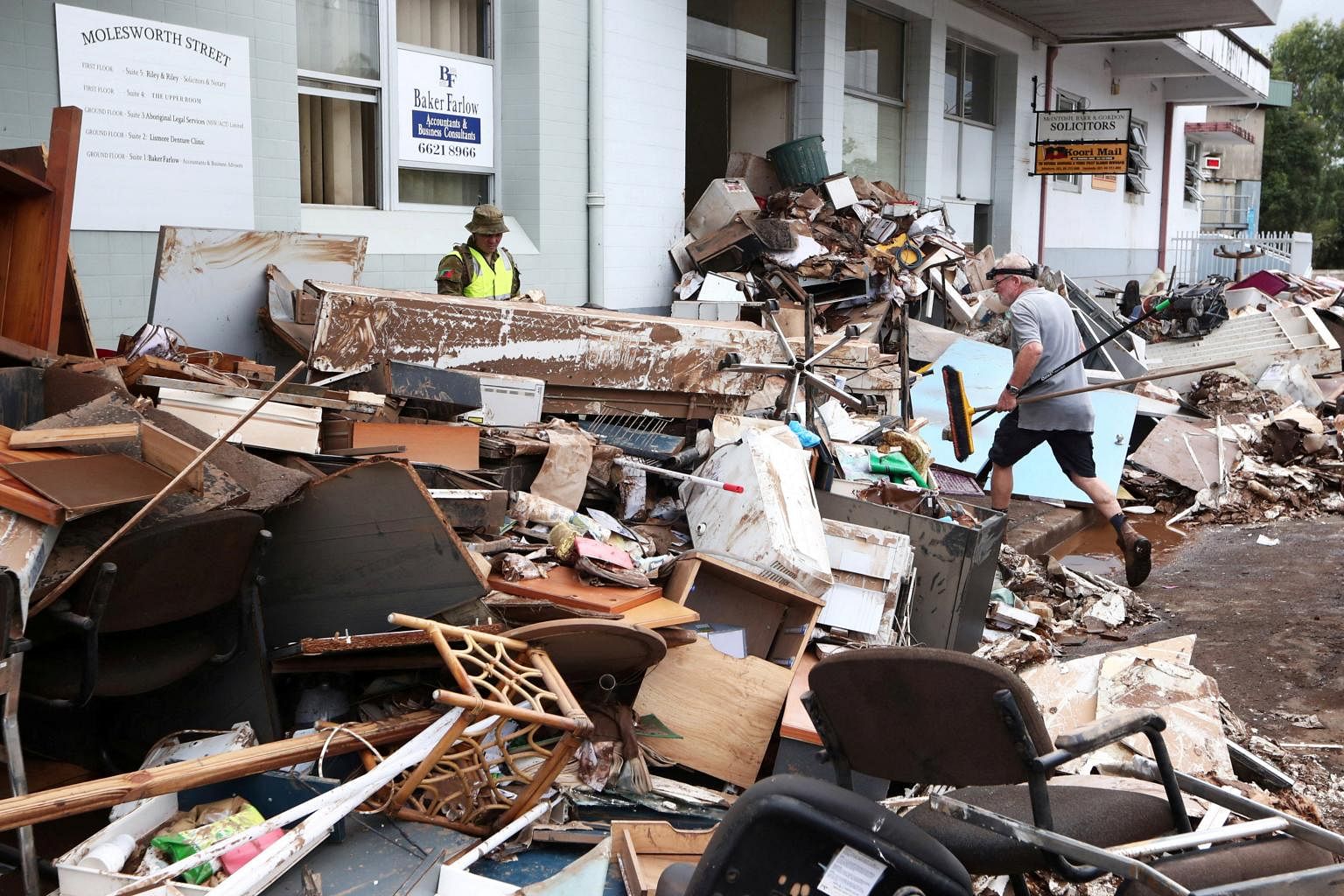Australian PM to declare east coast floods a national emergency
SYDNEY (REUTERS) - Australia will declare devastating floods along its east coast a national emergency, Prime Minister Scott Morrison said on Wednesday (March 9), as authorities look to deploy aid and urgent supplies to the worst-hit areas.
Mr Morrison, on a visit to the devastated town of Lismore in northern New South Wales state, also pledged more financial support for people and businesses affected by weeks of rain that have submerged rural towns and suburbs across Sydney.
The emergency declaration, which was set up after Australia's destructive 2019 bush fires, will give the federal government powers to cut red tape and speed up aid from defence personnel amid criticism about a slow response to the floods in which 20 people have died.
"The feedback we’ve had... has helped us identify where the gaps are right now, and how we can get support out the door quickly to where it’s needed," Mr Morrison said in a statement. The government had recommended the governor-general declare the floods a national emergency, he said.
Mr Morrison, who is trailing in polls ahead of a federal election before May, on Wednesday made private visits to a flooded farm, the office of an emergency crew and also met with a person who lost their home, media reports said.
Television footage showed some people gathered in front of an emergency operations centre, where Mr Morrison was due to visit, yelling "the water is rising, no more compromising" and "fossil fuel floods".
Mr Morrison’s conservative government late last year adopted a net zero carbon emissions target by 2050, but climate activists are demanding more aggressive action.
Two years ago, he was criticised for taking a family holiday in Hawaii during the fire emergency and was later heckled by angry residents of a bushfire-hit town over fire service funding and a lack of assistance.
A large swathe of Australia’s east coast has been inundated after a second intense low-pressure system in as many weeks led to fast-rising floodwaters that cut off entire communities and trapped many people trapped in their homes.
Frustrated residents, with no access to food, power and Internet for several days, have blamed the authorities for the slow speed and scale of relief efforts.
Major flooding continues in Sydney’s western suburbs, although thousands of residents in Sydney’s northeast returned to their homes after rains eased.
"Thankfully, the rain has eased, and we’ll see water levels continue to slowly recede in the coming days," Bureau of Meteorology forecaster Dean Narramore told reporters.
Australia’s east coast summer has been dominated by the La Nina weather phenomenon, typically associated with greater rainfall, with most rivers at near capacity even before the latest drenching.
Sydney has received nearly 900 mm (35 inches) of rain so far in 2022, or about 80 per cent of its annual rainfall, official data showed, the wettest start to a year since records began.

Meanwhile, thousands of residents in Sydney's north-east returned to their homes on Wednesday after rains eased, but major flooding continues in the city's western suburbs.
"Thankfully, the rain has eased, and we'll see water levels continue to slowly recede in the coming days," Bureau of Meteorology forecaster Dean Narramore told reporters.
Australia's east coast summer has been dominated by the La Nina weather phenomenon, typically associated with greater rainfall, with most rivers at near capacity even before the latest drenching.
Sydney has received nearly 900mm of rain so far this year, or about 80 per cent of its annual rainfall, official data showed, the wettest start to a year since records began.
Get The New Paper on your phone with the free TNP app. Download from the Apple App Store or Google Play Store now


